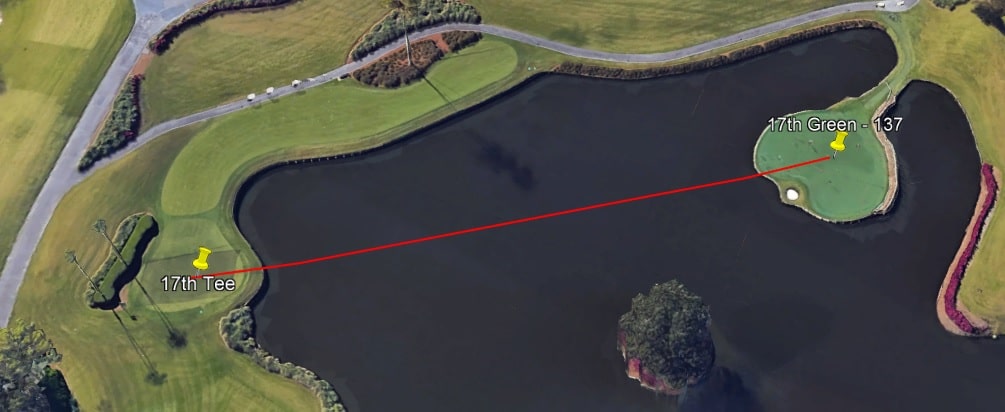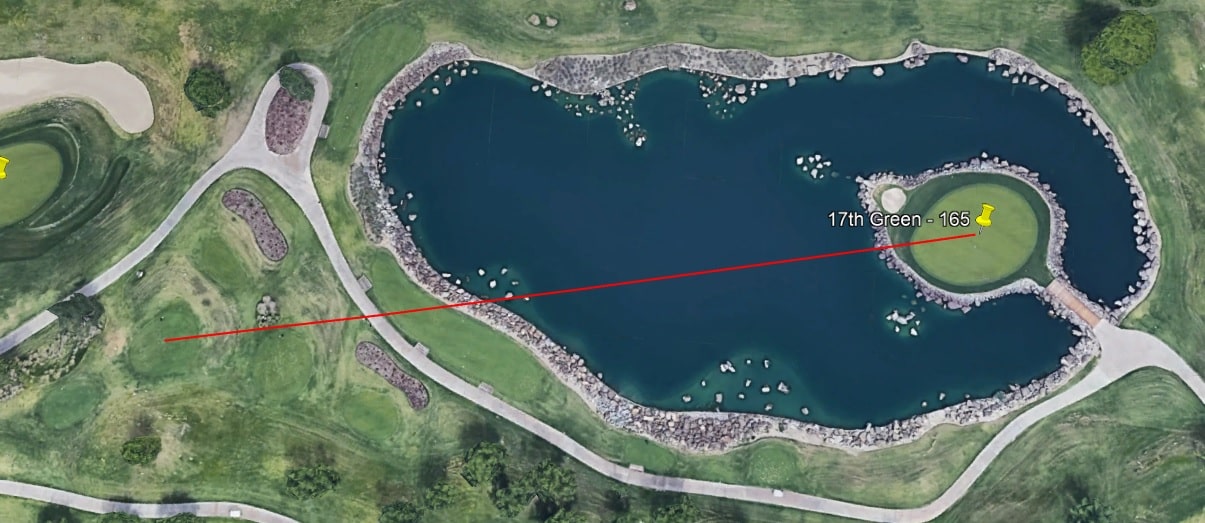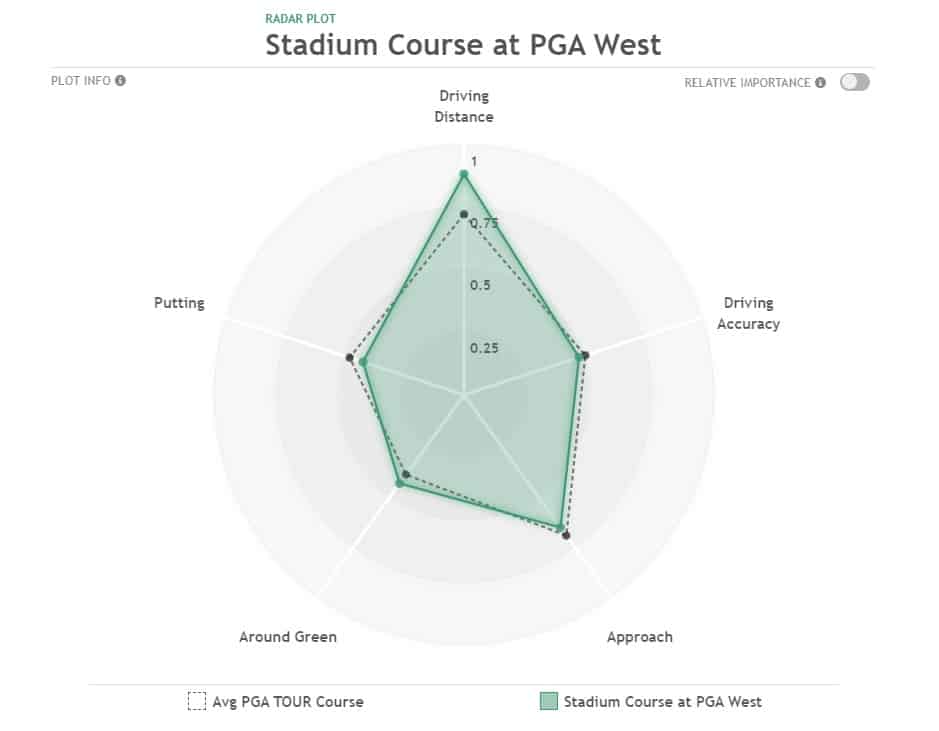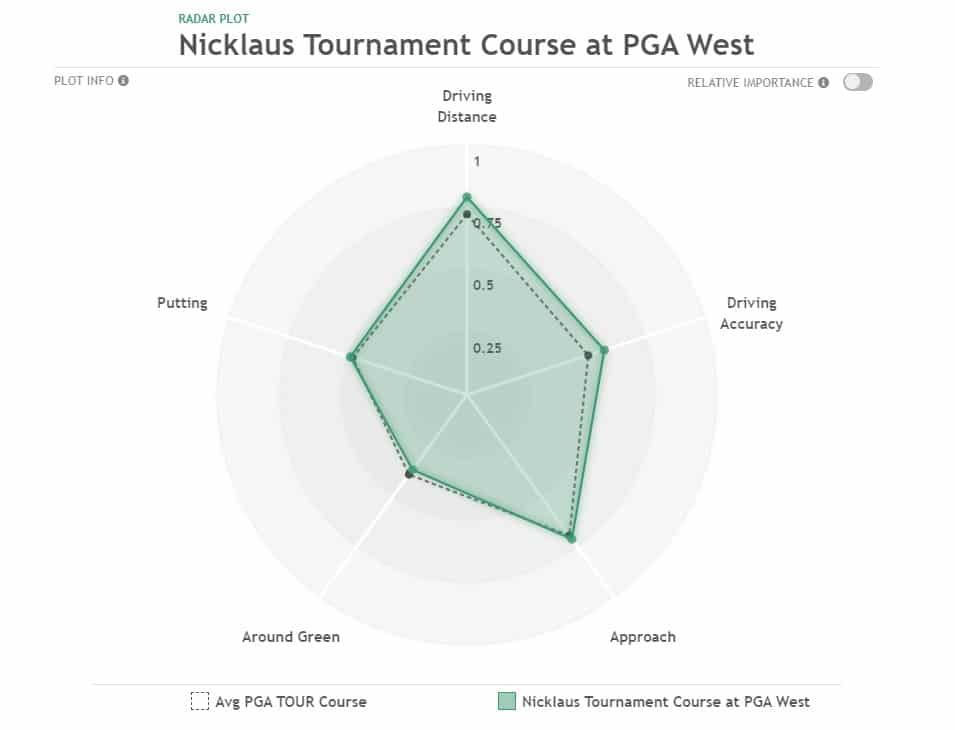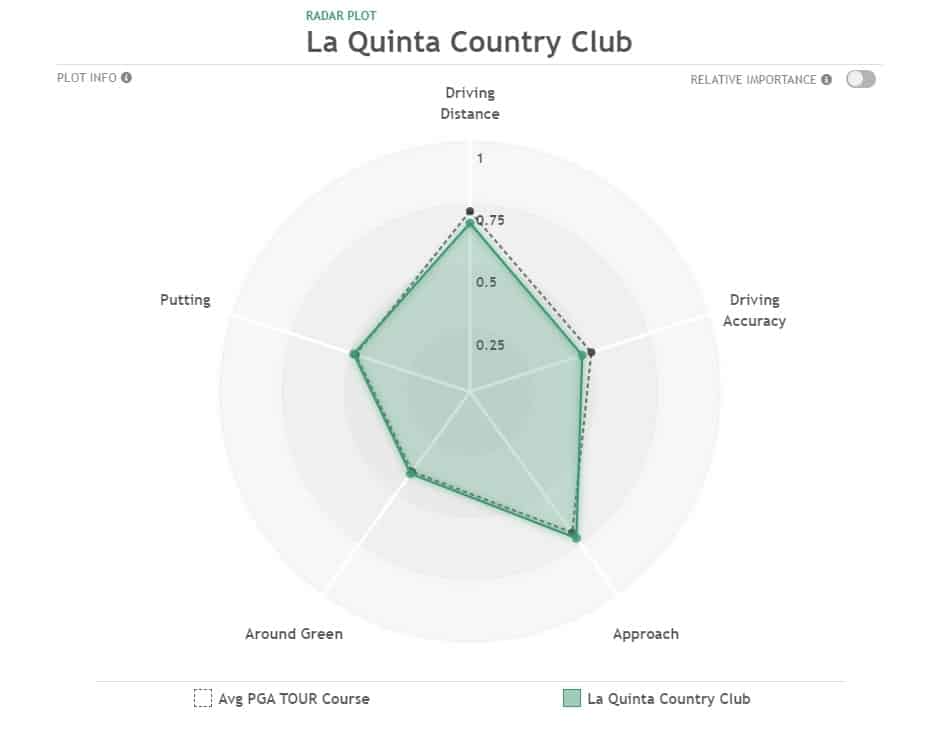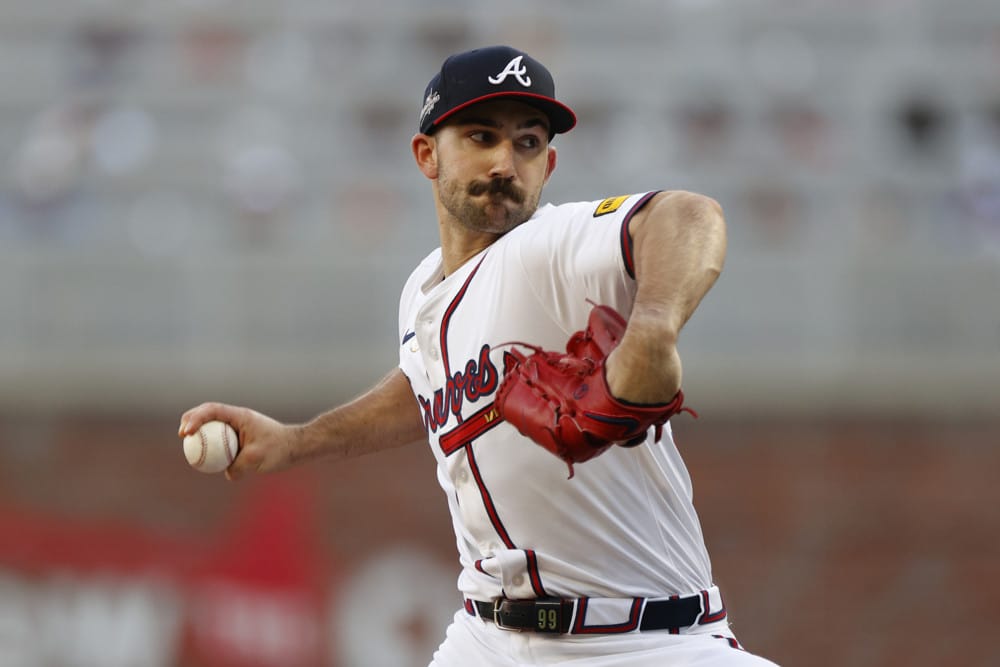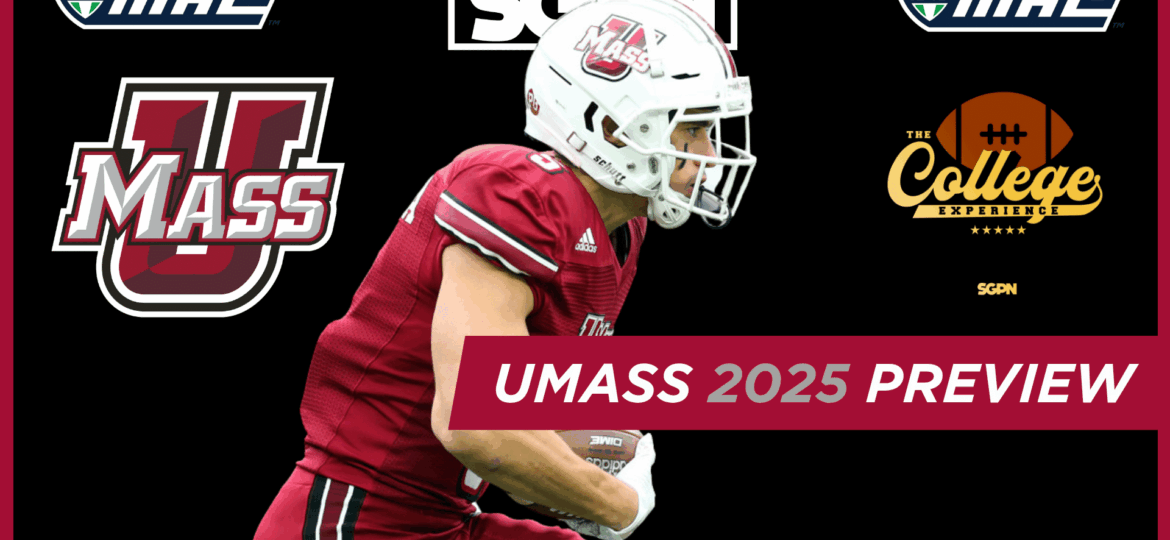For the first time in two months, the PGA Tour returns to the Lower 48. A very good field takes on three golf courses in Palm Springs for the 2023 American Express. As always, here is your early deep-dive of the 2023 American Express and a preview of how to bet. In addition, listen below to the Golf Gambling Podcast for more information about golf betting.
2023 American Express Preview – The Field
With the new PGA Tour schedule, it’s always a question as to how many stars will show up to non-designated events such as the American Express. However, golf fans and gamblers are in for a treat in 2023. There are a ton of big name players who will make the trip to Palm Springs.
Highlighting the field is Jon Rahm. Rahm is a former champion of this event and is coming in hot. Rahm has won three of his last 5 starts and hasn’t finished any lower than T8. Given Rahm’s track record at PGA West and La Quinta CC, he’s a threat to add another win to the trophy case.
Another name to watch out for is Xander Schauffele. Xander returns to this event for the first time since 2017. Typically, a player with as good of an all-around game like him would be a great fit for this multi-course tournament. However, his lingering back injury puts doubt into how well he’ll play this week. Monitor him before the tournament.
Other notables in the field include Sam Burns, Patrick Cantlay, Tony Finau, Sungjae Im, Tom Kim, Scottie Scheffler, Cameron Young and Will Zalatoris.
For the full field, click here.
2023 American Express Preview – The Golf Courses
In 2022, the American Express reverted to its normal format. La Quinta Country Club returned to the rotation in 2022. Everyone played all three golf courses across Thursday through Saturday. After Saturday, the Top 65 and ties will play the final round on Sunday. Expect the same in 2023.
The TPC Stadium Course at PGA West was designed in 1986 by legendary architect Pete Dye. It was built as a “sequel” TPC Sawgrass. The course first played host to the Bob Hope Classic in 1987, but the pros complained that it was way too hard. It was removed from the tournament after only one year.
After a couple of redesigns, the tournament came back to the Stadium Course in 2016. It is the “hardest” golf course in the tournament (more on this in a bit). The Stadium Course historically plays a little easier than the Nicklaus Tournament Course, and much easier than La Quinta Country Club.
There are several holes at the Stadium Course at PGA West that look almost identical to that of its TPC Sawgrass counterpart. The 5th at Sawgrass and the 9th at the Stadium Course is one example. The 10th at Sawgrass and the 12th at the Stadium Course is another.
But the most blatant rip-off of Sawgrass by the Stadium Course is the 17th hole:
17th Hole – TPC Sawgrass
17th Hole – The Stadium Course
The 17th at the Stadium Course is a virtual photocopy of the 17th at Sawgrass. Both are short Par 3’s featuring an island green and a small greenside bunker. The only difference between the two is the island green at TPC Sawgrass is supported by railroad ties, while the 17th at the Stadium Course is supported by rock outcroppings (hence the nickname Alcatraz).
And like the 17th at TPC Sawgrass, the 17th at the Stadium Course is the scene for some brutal blowups:
The Stadium Course also features its infamous canyon-sized bunker left of the Par 5 16th green. The bunker is about 18 feet below the putting surface and provides for a nasty up and down. For the pros, most can pull off the shot. For amateurs, however, finding that bunker is a disaster.
Here are some highs and lows from that bunker from past tournaments:
The golf course is currently in Year 1 of its 2 year renovation project. Year 1 involved the removal of approximately 200 trees and the restoration of ground cover and bushes. Year 2 will involve a restoration of all the greens and bunkers. For this year, the golf course will be a little more forgiving should players find themselves in the dormant bermuda rough. However, players often used trees as aiming points off-the-tee, and won’t have those this year.
The next course featured at the 2023 American Express is the Nicklaus Tournament Course:
The Nicklaus Tournament Course looks like any golf course in Florida or the Southwest. And it is essentially a watered down version of the Stadium Course. For amateurs, there are several ways to get in trouble on it. But for the professionals, there’s not much adversity to it. The fairways are a little wider at the Nicklaus than the Stadium Course. And in 2020, the greens were expanded back to their original design. They are much larger than the Stadium Course greens now.
The last course in the rotation is La Quinta Country Club. The course opened in 1959 and was renovated in 1999 by Damian Pazcuzzo. It has been part of the American Express rotation of golf courses since 1972
The sightlines from the tee are tighter than they are at PGA West. But besides that, the golf course has almost no defenses for anyone on the PGA Tour. Most fairway bunkers can easily be carried off the tee, and save for a water hazard off the 16th and 18th it takes some serious effort to shoot over par at La Quinta. This is the easiest course in the rotation.
2023 American Express Preview – Betting Strategies
The Stadium Course is the only golf course that has ShotLink data. As such, most of the statistics and trends featured in this section will refer back to the Stadium Course.
Here are some relevant facts and statistics about the 2023 American Express, which will preview which types of golfers to target on your betting card:
1. The Stadium Course, the Nicklaus Tournament Course, and La Quinta are all Par 72 golf courses. Each has four Par 5’s and four Par 3’s. In addition, they’re all roughly the same length each:
- Stadium Course: 7,187 Yards
- Nicklaus Tournament: 7,147 Yards
- La Quinta: 7,060 Yards
Only Pebble Beach, TPC Sawgrass, and Silverado play as shorter Par 72’s on the PGA Tour.
2 Each golf course features overseeded fairways and first cut of rough. The primary rough, however, will be 2″ dormant bermuda rough. The climate this time of year is too cold to sustain healthy bermuda grass growth.
At PGA West, the Nicklaus Tournament Course reopened for play on November 9th following the overseeding. The Stadium Course, however, reopened December 7th, almost two months after the fact. It’s unknown exactly why it took longer for the course to reopen, as typically a golf course needs about a month after overseeding to be suitable for member play.
The greens are also overseeded with a poa trivialis due to the colder winter months. However, with the new TifEagle greens at the Nicklaus Tournament Course it is possible to leave them in their natural state because that strain is much more cold tolerant than TriDwarf (the grass on the Stadium Course). For handicapping purposes, however, assume it is overseeded.
Here are other PGA Tour venues that feature overseeded greens:
- TPC Scottsdale (overseeded with Poa Trivialis and Ryegrass)
- TPC Sawgrass (overseeded with Poa Trivialis and Bentgrass)
- Innisbrook Resort (overseeded with Poa Trivialis)
- Austin Country Club (overseeded with Poa Trivialis)
- TPC San Antonio (overseeded with Poa Trivialis)
- Harbour Town (overseeded with Poa Trivialis)
- TPC Louisiana (overseeded with Poa Trivialis)
The overseed makes a difference to certain players. For example, Adam Hadwin noted that he struggles on bermuda, but loves putting on overseeded greens because those are more aligned to the surfaces he grew up playing on. And Jon Rahm notes that the greens roll much truer with the overseed, and combining that with good ball striking yields very low rounds.
3. While the Stadium Course once was regarded as “too tough”, it’s anything but now a days. As the most difficult golf course of the rotation, it still played to an average of 70.5 (or about -1.5) last year. Its Par 4’s play as the 5th easiest of all golf courses with at least 5 tournaments played since 2015. The Par 4’s and 5’s collectively average a little over 450 yards in length, one of the shortest on the PGA Tour.
While the Par 3’s aren’t the toughest on the PGA Tour, they’re the toughest part of the Stadium Course. While not the longest, the average is dragged down from the short Par 3 17th. The 4th plays at 170 yards, the 6th at 223 yards, and the 13th at 195 yards. And three of the four Par 3’s all have greenside ponds the players will have to navigate around.
4. In terms of strokes gained, the Stadium Course is the most difficult area is off-the-tee. It’s the eighth toughest golf course in this area of all golf courses with at least five events since 2015 on the PGA Tour. The Stadium Course has classic Pete Dye principles in terms of awkward tee shots where proper placement on the correct side is needed. Otherwise, players will have poor angles into each green.
Players who miss the fairway might also find some difficulty. There are mogul mounds that provide for uneven lies. The fairway bunkers are tricky to hit out of. And there are several holes with water hazards.
Because of this, the players often club down off the tee, especially on the Par 4’s. Often times there are forced layups where driver is unnecessary. Or players will opt to lay short of trouble and take a longer approach shot in. Of all drives hit, the Stadium Course features the 6th shortest average driving distance of all PGA Tour venues with at least five tournaments since 2015.
And for those who avoid water and awkward lies against a mogul mound, the penalty is almost non-existent. The dormant bermuda rough is only 2″ in length. That is quite short and very easy to hit out of. And the overseed tends to soften up the greens and make them quite receptive. It’s not paramount to be in the fairway at the Stadium Course, so long as you miss it in the right place.
5. The green in regulation rate at the Stadium Course typically is about 66%. That’s a little above PGA Tour average. It would be higher if it weren’t for the small size of each green.
The shorter approach shots at the Stadium Course are some of the easiest on the PGA Tour. Of all golf courses with at least five tournaments played since 2015, the Stadium Course ranks as the fourth easiest. It’s comparable to places like Waialae and Sedgefield CC in terms of difficulty on short approach shots.
For longer shots, it’s a different story. The Stadium Course ranks as the 8th toughest for approach shots greater than 150 yards. This is probably due to the difficult nature of a few of the longer Par 3’s at the golf course, including the 17th. And the small greens provide for a tiny target to hit from long range.
6. But even for those who miss a green at the Stadium Course, the difficulty to get up and down is not terrible. Getting up and down from the fairway at the Stadium Course is the easiest on the PGA Tour. And only Vidanta Villarta (with only one tournament) features easier rough to get up and down from on the PGA Tour.
But miss in a bunker, however, and your task is much tougher. The Stadium Course features the toughest bunkers to get up and down from of all regular stops on the PGA Tour. Pete Dye designs notoriously feature awkward and punishing bunkers to play out of should one miss in the wrong spot. The Stadium Course is no exception.
7. As Rahm alluded to in the reference above, the Stadium Course features pretty easy greens to putt on. In all three of putts under 5 feet, 5-15 feet, and 15+ feet, the greens at the Stadium Course all rank above average in terms of easiest greens to putt on the PGA Tour.
Next, let’s take a look at the relative skill set charts from DataGolf for each golf course. That will help preview the profile of player to target at the 2023 American Express:
At the stadium course, there seems to be more correlation of success for longer hitters and those who excel around the green than the average PGA Tour venue. There is less of a correlation between accuracy off the tee, good iron play and putting than the average PGA Tour venue.
The lower correlation of accuracy makes sense because players club down off-the-tee more often at the Stadium Course. Less correlation for iron play might be explained with the distribution chart below. And as for putting, the greens run both slow and true on the overseeded surfaces. That might shrink the gap between good and bad putters on the green.
This seems to run a little counter to some facts described above. The Stadium Course is more a positional course where players keep the driver in the bag. And the greenside surrounds (other than bunkers) are some of the easiest on the PGA Tour. So why then does the course favor longer hitters with good short games?
For starters, guys who are longer may be able to still access the optimal landing zones off the tee by clubbing down, which helps their accuracy. Shorter hitters might still need to hit driver to reach these areas, which is a more inaccurate club. In addition, players with more length can launch the ball higher into the air to stuff shots into receptive, small greens. That might explain why longer hitters have an edge at the course.
As for around the green, better players are less prone to making silly mistakes to cost themselves strokes. Because the conditions around the green are so easy, those who struggle in that area will penalize themselves higher against the field if they make a mistake.
Next, let’s look at the Nicklaus Course:
Like the Stadium Course, there is a higher correlation to success of those who hit it further. But there’s also a higher correlation to success for those who keep it in front of them off-the-tee, as well as better iron players and putters. There seems to be less success for those who excel with the short game.
Off-the-tee, there seems to be more opportunity to pull driver at the Nicklaus Tournament Course. It’s much more linear tee-to-green and features relatively wide landing zones. And there are fewer layup shots here than there is at the Stadium Course. But there are some awkward places to be should you miss a fairway. Therefore, a combination of length and accuracy has a huge edge at the Nicklaus Tournament Course (hello Jon Rahm!)
And because the Nicklaus is more of a scorers course, the ability to stuff iron shots and roll in putts is paramount here. There are a lot of birdie opportunities on the Nicklaus. Both not giving yourself enough good birdie looks and failing to convert will put you behind the eight ball at the course.
Lastly, let’s look at La Quinta:
There’s very little correlation of both good and poor drivers at La Quinta. All the trouble off-the-tee can be carried by almost every modern day PGA Tour professional.
But like the Nicklaus Tournament Course, there is a higher correlation to success for those who are good iron players and putters. Again, La Quinta is a place that you have to go low at in order to contend at the American Express. Any deficiencies in these areas will cost a player a good finish in the tournament.
To wrap up this discussion in the 2023 American Express preview, here’s a summary from all five categories for all four rounds (with Stadium Course counting double)
- Driving Distance: +, +, +, – , favor long hitters
- Driving Accuracy: -, -, +, +, net neutral
- Approach Play: -, -, +, +, net neutral
- Around Green: +, +, -, +, favor around-the-green performance
- Putting: -, -, +, +, net neutral
Lastly, let’s look at approach shot distances to target, starting with the Stadium Course:
This distribution is all over the map. There’s higher than average approach shots from under 125 yards. However, this only makes up about 25% of all approach shots on the Stadium Course. There’s a higher than average percentage from 150-175, but much lower than average from 125-150 and 175-200. Lower than average shots from 175-225, and slightly higher than average from 225+.
From 225+, you’re covered by just looking at overall Par 5 scoring. That will take care of that range.
Also, gamblers must consider the Nicklaus Tournament and La Quinta courses too. Unfortunately, there’s no ShotLink data to verify if with 100% accuracy. But based on how driver heavy the Nicklaus Tournament is and how scoreable it is, there probably is a good amount of approach shouts under 150 yards. And the same can probably be said about La Quinta.
As such, the optimal approach shot range to target is anything under 175 yards this week. While there probably is a lower than average percentage on Nicklaus and La Quinta between 150-175, the fact that it is a higher than average rate on the Stadium Course means it can’t be ignored.
Follow these tips in this preview, and you should put together a very good 2023 American Express betting card and DFS lineup.




